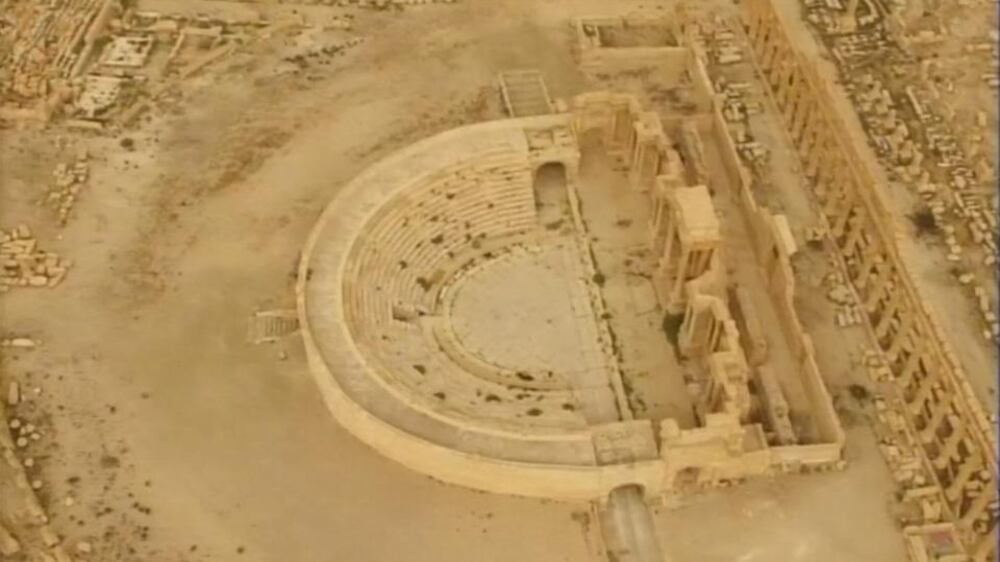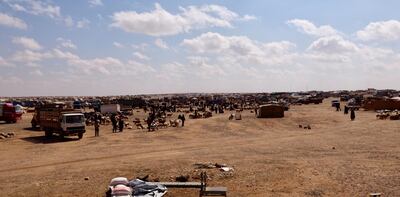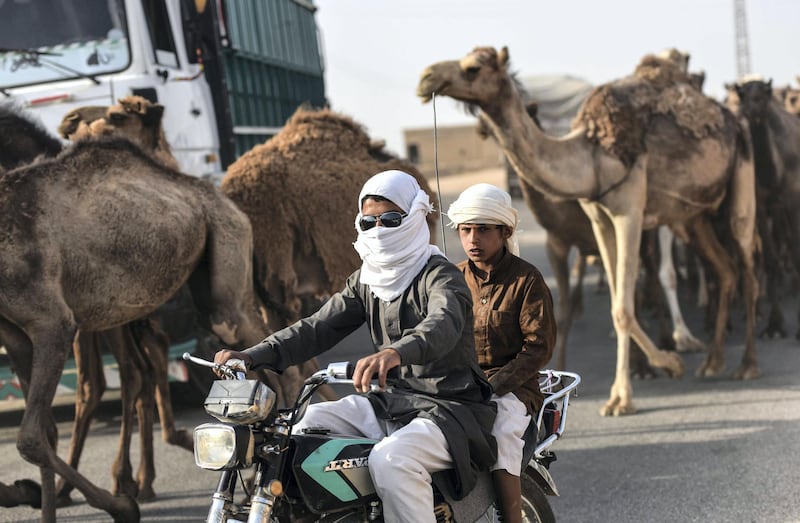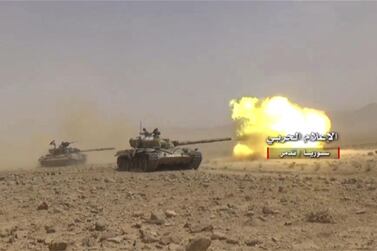From a rented room in Athens, Saleh Suwaidan recalls his family’s former life as Bedouin camel breeders in Palmyra.
By April each year, Mr Suwaidan, 32, would have been busy training the finest from his herd, improving their speed and honing their fitness for the big Palmyra race.
Thousands of Arab and foreign tourists once travelled to the Syrian desert for this event, which was part of the Palmyra Camel Festival – a highlight of the annual calendar in the oasis city.
At that time, 11 years ago, Mr Suwaidan’s family were prominent members of Palmyra’s Bedouin community. Together, the family owned 300 prize camels, which were passed down from Mr Suwaidan’s grandfather and worth an estimated $500,000 (Dh1.8 million).
That changed the day ISIS stormed into Palmyra, ransacking the ancient city and carrying out mass murder in the ruins.
But it was not just violence that forced the family to flee. “We left because our camels were stolen and smuggled out of the country,” Mr Suwaidan says.
Syria's camel industry is another victim of the nine-year conflict that has shattered Syria. For many nomadic breeders, protecting their camels became unaffordable as the fighting intensified and food sources dried up. They found themselves with no choice but to abandon their herds or sell them to smugglers and merchants.

Eyewitnesses say thousands of camels were sold on the black market and smuggled out of Syria, some to neighbouring countries, while others have been sent as far as the Arabian Gulf.
The final blow was when the ISIS fighters came into the desert, wielding AK-47s and demanding that the Bedouins hand over their herds. "They wanted (the camels) to feed their fighters,” Mr Suwaidan says.
Today, Palmyra is unrecognisable and many of its Bedouin residents, including the Suwaidan family, have fled. Saleh has not been back since 2016, when bombing by the government and ISIS violence forced him to abandon his comfortable home for an uncertain future.
Now he washes dishes at a restaurant in the Greek city of Athens, where the family moved after making the dangerous crossing from Turkey by boat. “We took off our Bedouin clothes and wore cleaning clothes,” Mr Suwaidan says with regret.
“I saw the sea for the first time when I got on the rubber boat to cross to Greece,” he says, eyes widening at the memory. “We grew up in the desert, we do not know how to swim.”
In 2014, when ISIS territory reached its peak in Syria and Iraq, the illegal camel trade was very active, smugglers say. According to Muhammad, 45, a smuggler living in Turkey, Syrian camels were being smuggled into Iraq through ISIS, and camel herds were crossing the borders daily.
"It was like a long caravan passing the border full of camels… Daesh took US $30 for each camel passing through," he told The National.
2016-03-28 Palmyra Drone

In addition to charging smugglers a fee, the terrorists took a percentage from camel sales in territory under their control.
Once, it was rare to see Syrian camels in the Turkish province of Sanliurfa, where Muhammad is based. Now, it is common to see them in Turkish villages such as Harran and Akcakale near the Syrian border.
Others crossed the Syrian-Jordan border, which is a gateway for smuggled camels to the Gulf. "There (is where) Syrian camels enter. These are our livelihoods,” says Hamad, 37, pointing to a dusty spot about two kilometres away.
Hamad is a well-known camel breeder in Mafraq, a city in north Jordan about two-hour drive from Damascus.
When The National meets Hamad, he is waiting for new arrivals purchased at a camel market in Rukban, a lawless refugee camp that sits in the no-man's land between the Jordanian and Syrian borders.
To help his camel-smuggling mission, Hamad lives in a tent-like caravan, so he can reach different crossing points along the border. Over six years, he has made a sizeable income from the trade and now owns three cars, two large lorries, and a pick-up.

Once over the border, the camels’ value goes up. "Taking camels out of Syria contributed to raising their prices – a camel in Syria was worth about $5,000, it now ranges between $3,000 and $14,000, depending on the specifications of the camel,” Hamad says.
But the supply chains are not always reliable in this unregulated trade. As darkness steals over the sandy landscape, it becomes clear the new camels have been delayed. A phone call confirms the hold-up. “The camels will not enter today," an angry voice says down the phone. "The duty officer we know is not here. He called me and said we have to wait until next week.”
Hamad pays an official to leave the border open for 45 minutes, but complications like this are not uncommon.
Since ISIS was defeated, Hamad and other breeders who rely on the supply of cheap smuggled camels have raised their prices, but they still cost less than Jordanian camels. It has weakened their business, but Syrian camels are still taken to Jordan, he says.
In South Jordan, near the border with Saudi Arabia, Khalaf, a 45-year old breeder, says the supply of Syrian camels has ebbed lately. “For years, camels were entering from Syria, but not now.”
Omar Saeed, who was responsible for counting camel numbers at the Syrian government’s desert department before 2011, estimates that up to 20,000 camels have been smuggled out of Syria.
A study by the Arab Centre for the Study of Arid Zones (ACSAD) and the Syrian Ministry of Agriculture found that there were 50,202 camels in the country in 2010, with an annual growth rate of 12.7 per cent. Now that number is much lower.
The loss is felt most keenly by Syria’s camel breeders, even those no longer living in the country like the Suwaidans. After finishing his shift each day, Mr Suwaidan returns to his room in Athens and swaps his clothes for traditional Bedouin dress. He takes a seat on the sofa and drinks tea with his cousin, just as they did in the desert at home.
The picture on the wall shows a young Saleh in happier days, riding a camel in Palmyra. “For us, camels were everything. We left the desert and came to Europe. Those pictures are just a distant dream of memory now. We are dead like fish outside the water,” he says with a sad smile
Taking his phone out, he flips through pictures of the camel race they used to run each year. "Where do you think our beautiful camels are now? he asks. “Maybe in Iraq or Jordan, Turkey or in the courtyard of one of the Gulf princes.”
Mohammad Bassiki contributed to this article, which was developed with the support of the Money Trail Project






